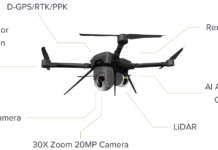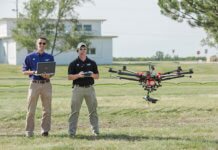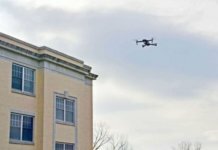Intel is highlighting a drone use case in which the company used its Falcon 8+ unmanned aircraft system (UAS) to help preserve the 15th-century Halberstadt Cathedral in Saxony-Anhalt, Germany.
In collaboration with Bauhaus University Weimar and Kulturstiftung Sachsen-Anhalt, a foundation for the preservation of cultural monuments, Intel is powering inspections and damage assessment of the cathedral. Through a series of indoor and outdoor missions on both automated and manual flight paths, the Intel Falcon 8+ drone helped capture data that will inform the next steps for restoration planning.
According to Intel, historical structures, like the Halberstadt Cathedral, can deteriorate over time due to changing environmental conditions. Standard stock condition surveys and structural health monitoring are evidence-based approaches that have historically been used to look at all parts of a building to assess its condition and state of repair. Though it’s a critical process, these surveys are very costly and technically difficult to conduct, says Intel.
However, the Falcon 8+ UAS is providing the conservation team with a cost-effective way to carry out a visual inspection of fragile, hard-to-reach structures without disturbing their surroundings. This is especially important because of the delicate condition of the Gothic-style church and its artwork, notes Intel. Several damaged statues required a new approach for stock condition surveying to mitigate the potential risk of damage from traditional methods involving ladders or scaffolding.

“Advanced technology, like the Intel Falcon 8+ drone, provides enormous potential for structural monitoring,” comments Norman Hallermann of Bauhaus University Weimar. “Working with Intel drone technology has allowed us to reach previously inaccessible spaces, like the cathedral’s bell towers. While we are just in the beginning stages of this three-year project, the costs saved by carrying out these inspections via a drone are already being put towards further conservation efforts.”
Specifically, the Intel Falcon 8+ drone captured nearly 1,000 detailed images (and additional footage) in less than an hour. That data was post-processed to generate 3D structural models for the team to analyze.
“In this case, the Intel Falcon 8+ drone is becoming an extension of the preservation team,” says Anil Nanduri, vice president and general manager within Intel’s New Technology Group. “Intel is excited about the future of inspections being automated and analyzed using drones. We are thrilled to be part of this project to restore this iconic piece of history and to be able to contribute with our technology.”













